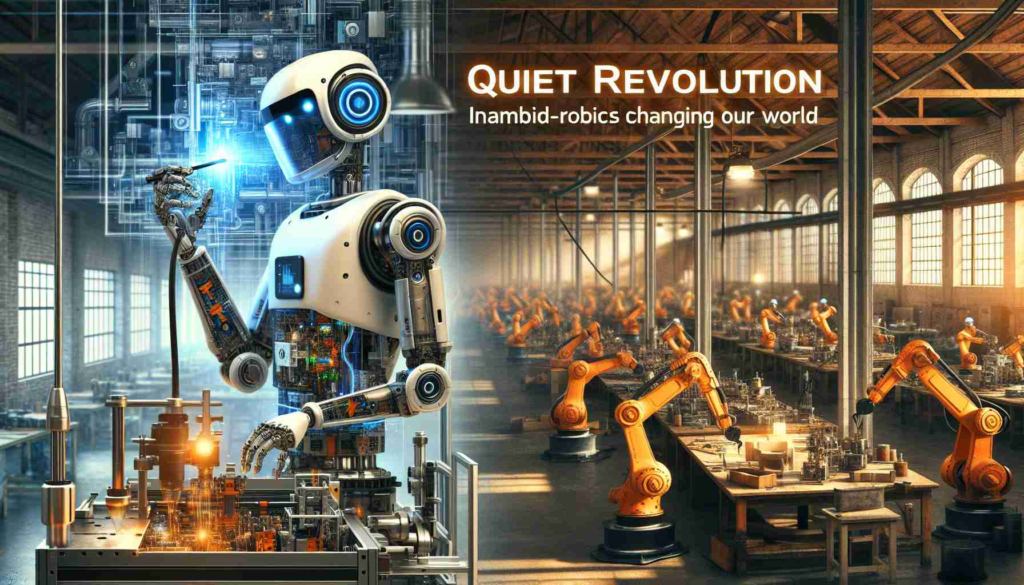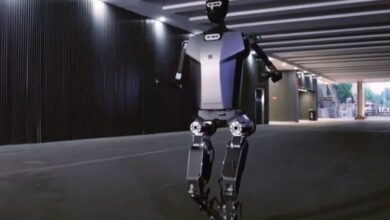How Robotics is Changing Our World


As we navigate the contemporary epoch, robotics has leapt from the pages of fiction to become a tangible part of our working lives. Today, robots share our workspace, assist in agricultural endeavors, aid in healthcare, and are on the brink of transforming transportation. The era of robots as factory co-workers, digital farmhands, medical assistants, and future chauffeurs is not a distant future but our present reality. This shift is evident as automotive guided vehicles (AGVs) and autonomous mobile robots (AMRs) now zoom around factories, enhancing efficiency and minimizing human error.
This article provides an insightful exploration into how mobile robotics is revolutionizing various facets of our daily lives. In manufacturing, robotics has transformed the production line, making it faster and safer. Farmers now utilize precision agriculture techniques with the help of robots, leading to more effective resource use and environmentally friendly practices. Robotics in healthcare has introduced a new level of precision in surgeries and has provided indispensably in areas such as ward disinfection and elderly care.
The advent of autonomous vehicles suggests a future with safer roads and more efficient logistics. Delivery companies are testing the promise of drones and other robotic solutions to streamline parcel distribution. However, this technological revolution also presents ethical considerations regarding the balance between robotic efficiency and the human touch.
As robotics seamlessly integrates into our daily activities, we are tasked with ensuring this technological advancement enhances humanity rather than supplants it. The careful management of this silent revolution in robotics is crucial as we use it to serve the greater good, without losing the essence of our own humanity.
Industrial Robotics Market Overview
The robotics industry has witnessed staggering growth over the past few years, with its trajectory aiming ever higher. According to market research, the global industrial robotics market size is expected to grow significantly, fueling productivity and reshaping industries worldwide. Advancements in AI, machine learning, sensor technology, and automation have all contributed to the rise of robotics in the industrial sector.
Market Forecasts and Sector Analysis
Market analytics forecast a robust expansion for the robotics market, driven by their increasing adoption across various sectors such as automotive, electronics, healthcare, and agriculture. Robotics in the automotive industry, for instance, continues to dominate the market with collaborations between major manufacturers and robotics companies aiming to enhance production lines and vehicle assembly processes. In agriculture, the necessity to meet the food demand of a growing global population prompts the deployment of robots in tasks such as planting, harvesting, and crop monitoring. Healthcare robotics, another burgeoning sector, is predicted to witness substantial growth with the deployment of robot-assisted surgical systems, disinfection robots, and assistive devices for patient care.
Emerging Trends and Challenges
The robotics revolution is not without challenges. The rise of robotics stimulates discussions on issues such as labor displacement, cybersecurity risks associated with connected robots, and the need for regulatory frameworks to ensure safe and ethical practices. Additionally, the high initial investment costs and technical complexities of robotics systems pose hurdles for smaller businesses and emerging economies.
Nonetheless, innovations such as collaborative robots (cobots) designed to work alongside humans safely are mitigating some of these concerns, emphasizing cooperation over replacement. Ethical considerations, particularly in terms of data privacy, transparency, and inclusivity, continue to be a focus for industry watchdogs and policymakers.
The integration of 5G technology promises to further enhance the capabilities of robotics systems, leading to even more dynamic applications. For instance, high-speed, low-latency communication offered by 5G could unlock the potential for fully autonomous drone fleets and advanced teleoperations in remote surgery.
Concluding Perspectives
The poignant intersection of robotics and human-centric concerns highlights the need for responsible stewardship as we step into a future replete with robotic technology. It’s essential to guide this integration so that it fosters human skill enhancement, job creation in new areas, and leads to sustainable practices in both industry and lifestyle.
As the intelligent robotics narrative unfolds, regulators, businesses, and communities alike must work in tandem to ensure technologies such as AGVs, AMRs, and autonomous vehicles contribute positively to society. The conversation around robotics is not merely about technological breakthroughs but also about sculpting a symbiotic future where robots act as enablers of greater societal wellbeing. For further information and updates on the broader industry, you might visit authoritative sources such as Robotics Industry Association, International Federation of Robotics, or technology news on WIRED.

Iwona Majkowska is a prominent figure in the tech industry, renowned for her expertise in new technologies, artificial intelligence, and solid-state batteries. Her work, often at the forefront of innovation, provides critical insights into the development and application of cutting-edge AI solutions and the evolution of energy storage technologies. Majkowska’s contributions are pivotal in shaping the future of sustainable energy and intelligent systems, making her a respected voice in both academic and industrial circles. Her articles and research papers are a valuable resource for professionals and enthusiasts alike, seeking to understand the impact and potential of these transformative technologies.



